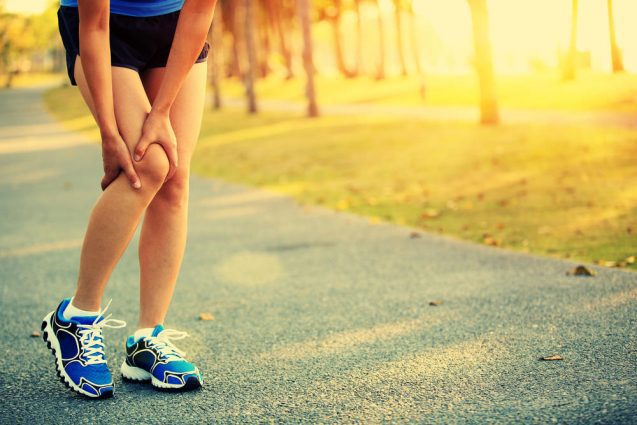 Of the body’s joints, the knees are probably the most prone to problems as almost everyone has some type of knee pain or another.
Of the body’s joints, the knees are probably the most prone to problems as almost everyone has some type of knee pain or another.
The knee is specially designed to allow for the extension of our legs and the flexibility to bring spring to our steps, especially when running; but the knee is a very common location for joint pain.
Three types of knee situations:
1. Temporary and self healing
a) Bruises and mild swelling from bumps and falls
b) Mild strain of muscles and ligaments attaching to the knee
2. Functional problems that can be managed by conservative methods
a. Patella bursitis with swelling in front of knee joint; pain when stepping down the stairs; knee clicks after sitting cramped too long.
b. Strain of lateral knee ligaments
c. Tight ligaments from postural weakness: too much sitting, not enough stretching
d. Moderate ligament strains and sprains
3. Pathological problems that require Orthopedic care including surgery. The key findings in these situations are severe disabling pain and massive knee swelling.
a. Torn cartilage or slipped meniscus
b. Torn supportive ligaments both external to and internal to the knee
c. Fractures
Three simple first aid ideas to alleviate the underlying causes of knee pain (swelling, inflammation and damaged cells) that fall into the first two categories listed above:
A. Ice for swelling:
An ice bag is best applied for 20 to 30 minutes (not less or more) over the area of swelling and repeated after a 40 to 60 minute rest period without ice such as 20-ON and 40-OFF or 30- ON and 60-OFF up to eight times per day.
B. Bracing with elastic support or sports bandage:
This keeps the swelling down and offers strength support for the weakened knee. Use when awake; especially when standing, but only under professional advice during sleep.
C. Stretching of the ligaments that attach to the knees:
Tight hamstring tendons that are located in the back of the thigh and the calf muscle tendons from the back of the lower leg can shrink or shorten. This will place abnormal stress on the knee joint so a part of preventing knee problems is to regularly stretch these tendons; therefore, when this rule is neglected the stretching must become a part of the solution to reduce pain from tight fibers and to restore flexibility to the knee to better adapt to the forces subjected within and around the knee.
Knee problems can occur from direct trauma as in falls or sports injuries but most degenerative knee problems start with postural defects and nerve supply to the legs from the lower back.
Chronic knee pain needs a chiropractic spinal evaluation to properly evaluate and treat any persistent conditions.



